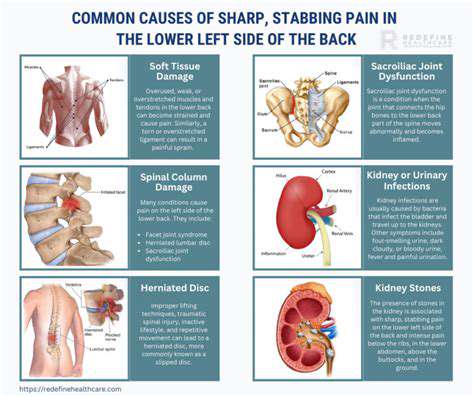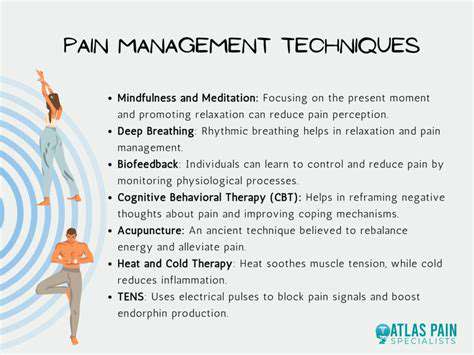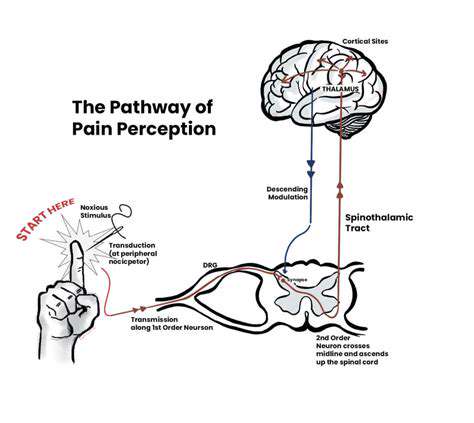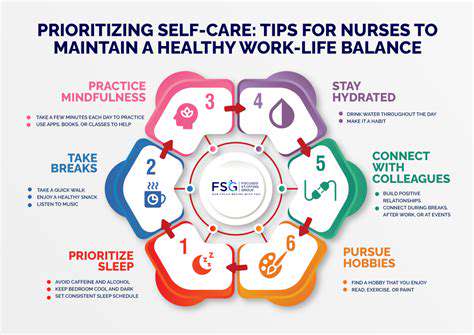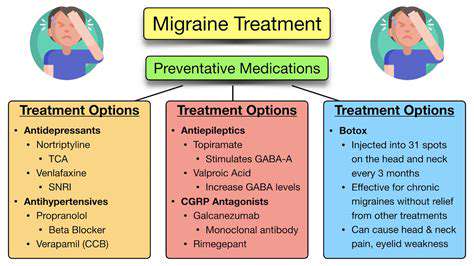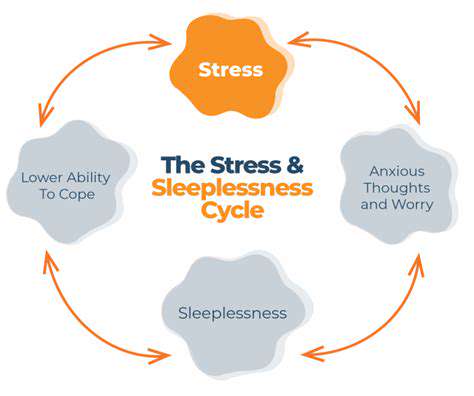Are Migraines Just Bad Headaches? Understanding the Reality
The Distinguishing Characteristics of Migraine Pain
Understanding the Intensity and Pervasiveness of Migraine Pain
Migraine pain often transcends the typical experience of a headache. It's characterized by a throbbing, pulsating sensation, frequently localized to one side of the head. This intensity can range from moderate to excruciating, significantly impacting daily activities. The pain's persistent nature, sometimes lasting for hours or even days, sets it apart from other headaches. This unrelenting throbbing can be accompanied by other symptoms, further compounding the discomfort and reducing functionality.
The pervasiveness of migraine pain extends beyond just the physical sensation. It often comes with nausea, vomiting, and extreme sensitivity to light and sound. These associated symptoms can dramatically reduce a person's ability to engage in work, social activities, or even basic self-care. The debilitating nature of this combination of pain and associated symptoms is a key element differentiating migraine from other types of headaches.
The Role of Trigger Factors in Migraine Development
Migraines aren't simply random occurrences; they often have identifiable triggers. These triggers can range from stress and changes in sleep patterns to specific foods, environmental factors like bright lights or strong smells, and even certain weather conditions. Understanding these triggers is crucial in managing migraine episodes and preventing future occurrences. Recognizing patterns in exposure to these triggers can empower individuals to proactively mitigate risks.
Identifying personal trigger factors is a significant step in managing migraines. Keeping a detailed headache diary can be invaluable, allowing individuals to correlate potential triggers with headache occurrences. This meticulous record-keeping can reveal subtle patterns and connections that might otherwise go unnoticed, leading to more effective preventative strategies.
The Impact of Migraine on Daily Life
Migraines significantly impact daily life, often disrupting work, school, and social activities. The intense pain and associated symptoms can lead to missed appointments, reduced productivity, and isolation from social interactions. The frequent nature of migraine attacks can create a cycle of avoidance, impacting the individual's quality of life and creating a significant personal burden.
Beyond the immediate impact, the chronic nature of migraines can have a long-term effect on an individual's mental health. The constant fear of an attack, the disruption to routines, and the potential for missed opportunities can lead to stress, anxiety, and even depression. The cumulative effect of these challenges can significantly reduce overall well-being.
Distinguishing Migraine from Other Headache Types
While many types of headaches share some similar characteristics, migraines possess distinct features that differentiate them. The pulsating quality, often unilateral location, and the presence of nausea and sensitivity to stimuli are key indicators that help distinguish migraines from tension headaches or cluster headaches.
Understanding these distinctions is crucial for appropriate diagnosis and treatment. A healthcare professional can conduct a comprehensive evaluation to determine the specific type of headache being experienced, ensuring the appropriate management strategies are implemented. Seeking medical advice is essential for accurate diagnosis and tailored treatment plans.
The Importance of Seeking Professional Medical Attention
If you experience persistent or severe headaches, it's essential to seek professional medical attention. A healthcare provider can accurately diagnose the type of headache and develop a personalized treatment plan. Ignoring or underestimating the symptoms of migraines can delay appropriate intervention, potentially worsening the condition over time. Seeking prompt medical attention is essential for effective management and to avoid potential complications.
Early diagnosis allows for the implementation of preventative measures and tailored treatment strategies. A healthcare professional can assess individual needs and provide guidance on lifestyle modifications, medication options, and potential therapies that can help manage and minimize the impact of migraines on daily life. Don't hesitate to schedule an appointment to discuss your concerns.
The Role of Neurological Factors in Migraines
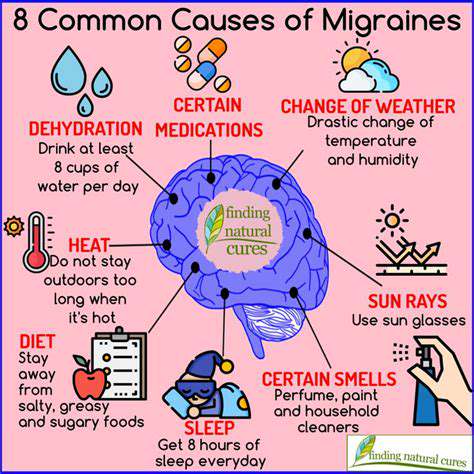
The Impact of Brain Structure on Function
Neurological factors play a crucial role in shaping human behavior and cognitive abilities. The intricate structure of the brain, with its billions of interconnected neurons, dictates how we process information, form memories, and interact with the world. Damage to specific brain regions can lead to significant functional impairments, highlighting the close relationship between anatomy and function. Understanding the precise mechanisms by which brain structure influences behavior is a complex challenge, but one that is critical for advancing our knowledge of neurological disorders and optimizing treatment strategies.
Different brain regions are specialized for different functions. For example, the prefrontal cortex is involved in higher-level cognitive processes like planning and decision-making, while the hippocampus plays a vital role in memory formation. Disruptions in these areas can result in problems ranging from difficulty with concentration to profound memory loss, underscoring the importance of maintaining optimal brain health.
The Influence of Neurotransmitters on Behavior
Neurotransmitters are chemical messengers that transmit signals between neurons. They are essential for regulating a wide range of physiological processes, including mood, sleep, and motor control. Imbalances in neurotransmitter systems can contribute to various mental health disorders, such as depression and anxiety. Understanding the intricate pathways and interactions of these crucial molecules is vital for developing effective treatments for these conditions.
Neurotransmitters like serotonin and dopamine play key roles in regulating mood and motivation. Variations in their levels can significantly impact a person's emotional state and drive. Furthermore, research continues to explore the connections between neurotransmitter systems and other neurological factors like sleep cycles and stress responses, providing a deeper understanding of the complex interplay within the brain.
Genetic Predisposition to Neurological Conditions
Genetic factors significantly influence the development and progression of neurological conditions. Certain genes can increase an individual's susceptibility to disorders like Alzheimer's disease, Parkinson's disease, and multiple sclerosis. Understanding the genetic basis of these conditions is crucial for early detection, prevention, and personalized treatment strategies. Scientists are actively researching the specific genetic markers associated with neurological disorders to improve diagnostic accuracy and therapeutic approaches.
The Effects of Environmental Factors on the Brain
Environmental factors also play a critical role in shaping neurological function. Exposure to toxins, nutritional deficiencies, and traumatic brain injuries can all have long-lasting effects on brain structure and function. For example, early childhood experiences can profoundly impact brain development, potentially shaping the individual's susceptibility to future mental health problems.
The Role of Neuroplasticity in Recovery
Neuroplasticity, the brain's ability to reorganize itself by forming new neural connections throughout life, is crucial for recovery from neurological injury or illness. This remarkable capacity allows the brain to adapt and compensate for damage, potentially restoring lost function. Understanding the mechanisms of neuroplasticity is essential for developing rehabilitation strategies that promote recovery and improve the quality of life for individuals with neurological conditions. Therapeutic interventions designed to enhance neuroplasticity may play a critical role in promoting brain health and recovery.

